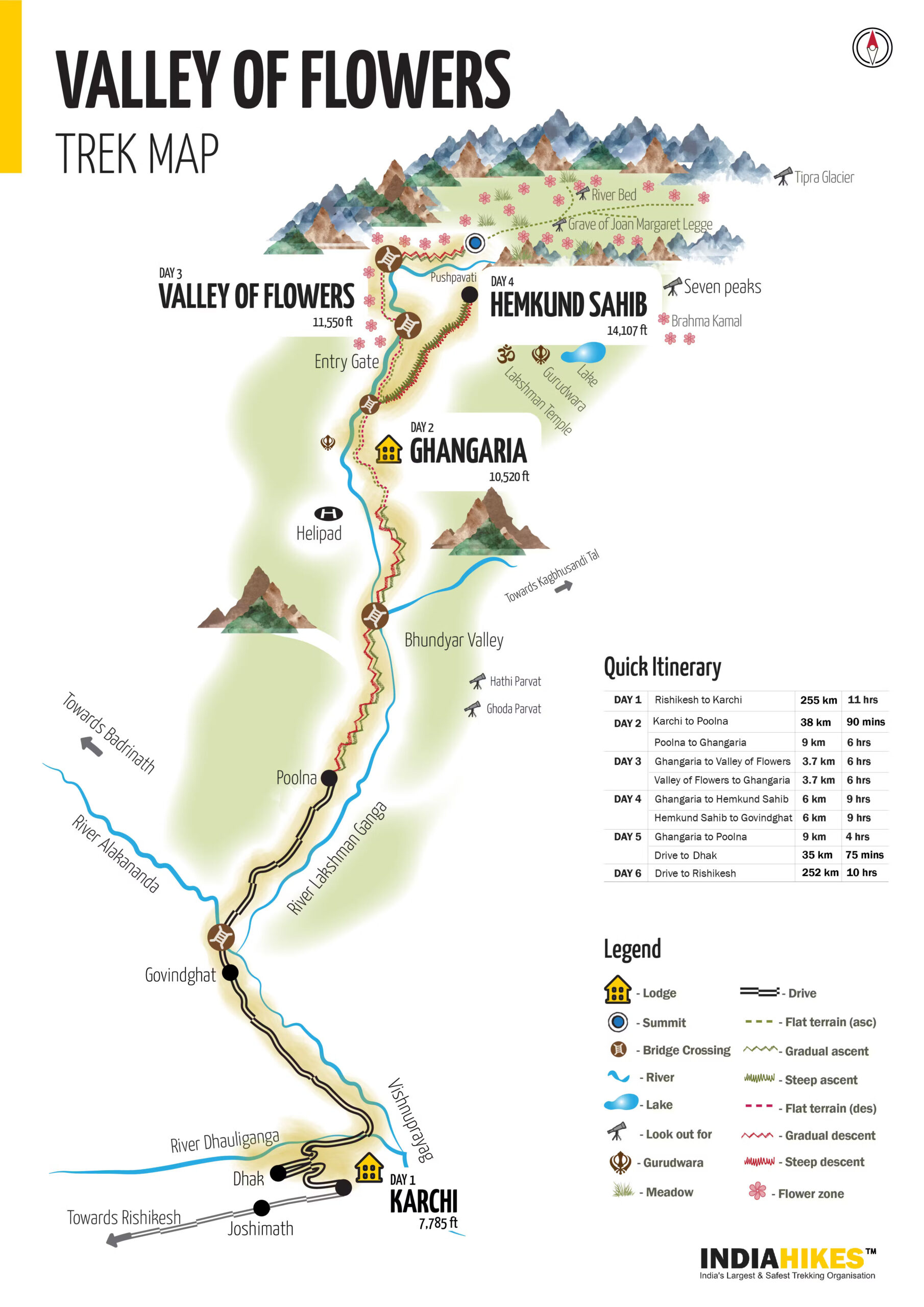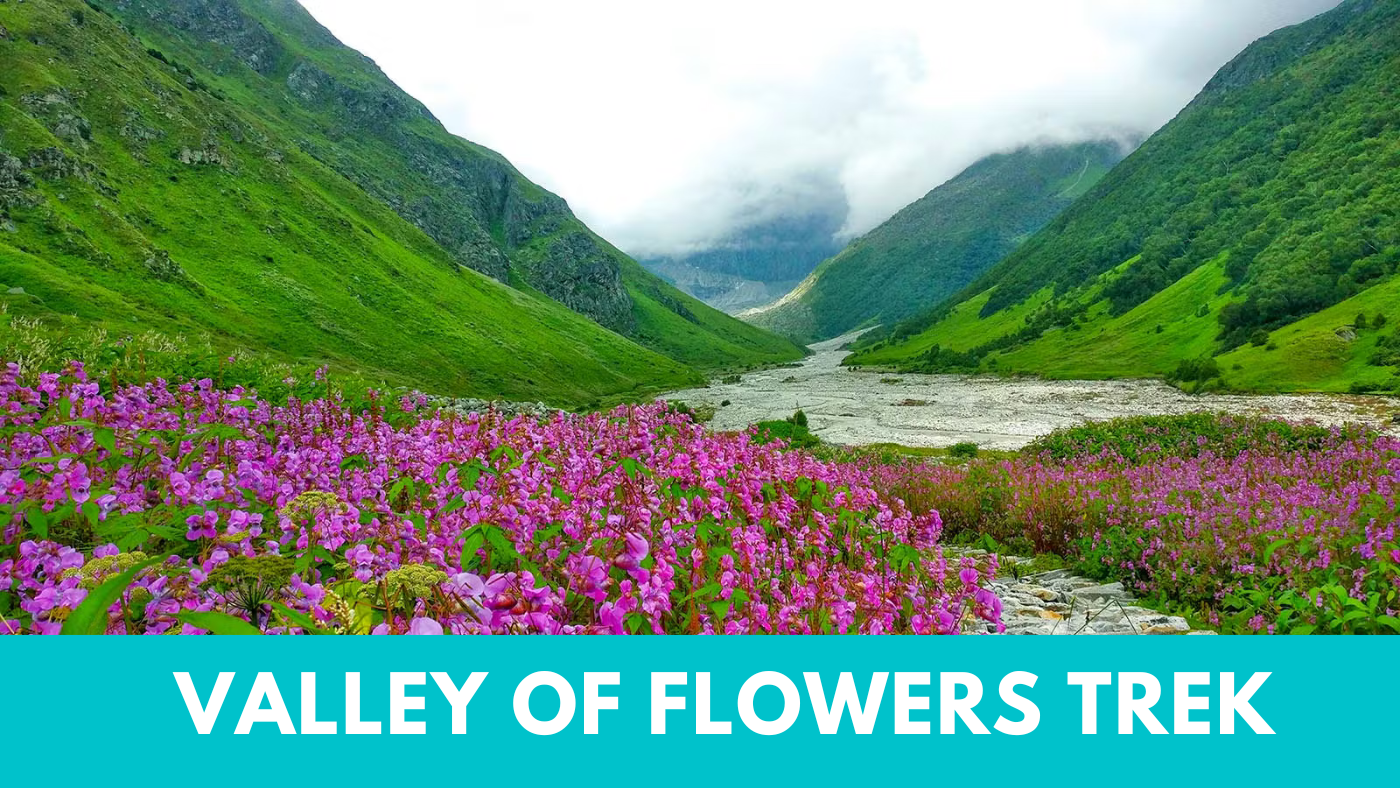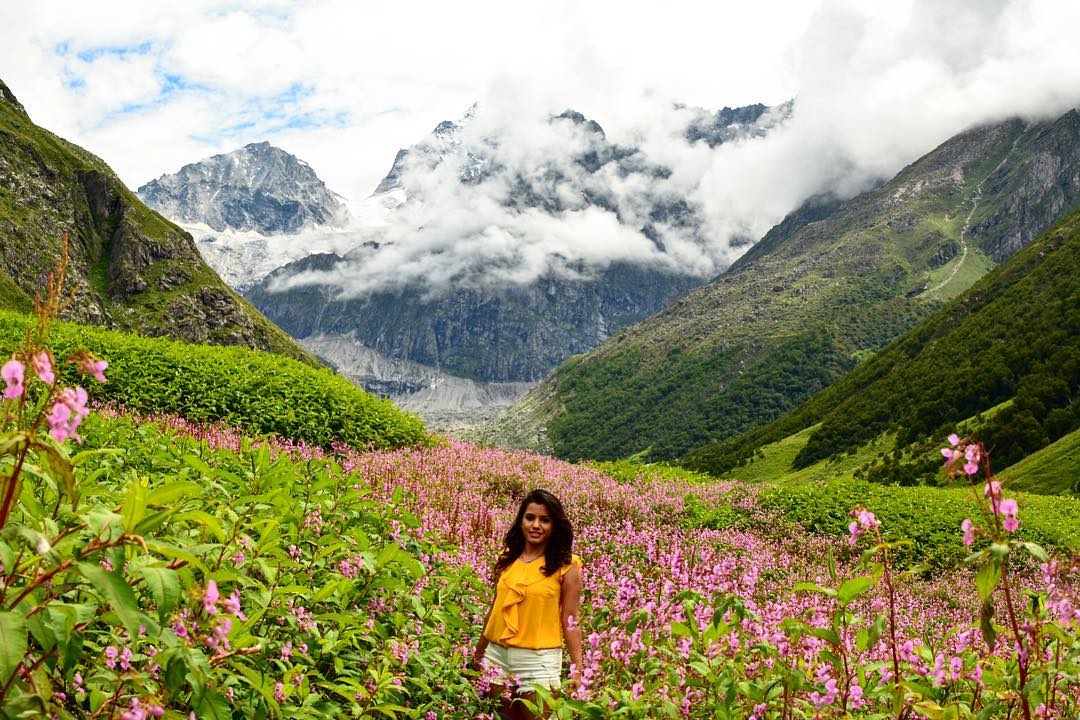Overview
Nestled in the heart of the Indian Himalayas, the Valley of Flowers trek is a natural wonder that enchants all who venture there. This UNESCO World Heritage Site is a testament to the awe-inspiring beauty and diversity of our planet’s flora. In this blog, we will delve into the details of this magnificent trek, covering its length, how to reach it, the best time to visit, and whether the Valley of Flowers is truly worth your visit.
How Long Is the Trek to Valley of Flowers?
The Valley of Flowers trek is a journey that takes you through a pristine and unspoiled natural paradise. The trek is approximately 10 kilometres long one way, so a round trip would be around 20 kilometres. However, it’s not just the length that defines the trek, but the journey itself. The trail is relatively easy, making it accessible to many trekkers, from beginners to experienced hikers. The well-marked path meanders through lush meadows, thick forests, and crystal-clear streams, offering plenty of opportunities to immerse yourself in the serene beauty of the region.

How to Reach Valley of Flowers?
Reaching the Valley of Flowers requires effort, but the journey is as much a part of the adventure as the destination. Here’s how to get there:
1. By Air
The nearest airport is Jolly Grant Airport in Dehradun. From there, you can hire a taxi or take a bus to reach Joshimath, the base camp for the Valley of Flowers trek.
2. By Train
The closest railway station is Rishikesh, and you can continue your journey to Joshimath by road.
3. By Road
You can also opt to drive directly to Joshimath or take a bus from Rishikesh or Haridwar.
Once you reach Joshimath, you’ll embark on the trekking adventure, which takes you through Govind Ghat and Ghangaria, where you can rest before the final stretch to the Valley of Flowers.
Which Month Is Best for the Valley of Flowers Trek?
The best time to visit the Valley of Flowers is during the summer months of July to September. This is when the valley is transformed into a vibrant carpet of colourful wildflowers in full bloom. Each month offers a unique experience:
July
Witness the valley coming to life as flowers begin to bloom.
August
The valley is in full bloom, with a stunning array of flowers in every hue.
September
As the season nears its end, the flowers start to wither, and the landscape takes on an entirely different charm.
Visiting outside of these months is discouraged due to harsh weather conditions and the risk of heavy rainfall and landslides.
Is Valley of Flowers Worth Visiting?
The Valley of Flowers is worth every step of the journey. Here’s why:
1. Breathtaking Beauty
The valley is a visual masterpiece, with its vivid flowers against the backdrop of towering Himalayan peaks.
2. Unique Flora
You’ll find hundreds of species of wildflowers, some of which are endemic to the region.
3. Rich Biodiversity
The valley is a haven for rare and endangered species, including the elusive snow leopard.
4. Serene Environment
The tranquillity and serenity of the valley make it a perfect place to reconnect with nature.
5. Adventure
The trek itself is an adventure, taking you through changing landscapes, pristine rivers, and dense forests.
6. Cultural Experience
The nearby villages are inhabited by warm and hospitable locals, offering a chance to experience the local culture.
Conclusion
The Valley of Flowers trek is a dream come true for nature lovers, adventure enthusiasts, and anyone seeking a unique and unforgettable experience in the lap of the Himalayas. The stunning beauty, diverse flora, and peaceful environment make this trek a journey of a lifetime. Whether you’re a seasoned trekker or a novice hiker, the Valley of Flowers welcomes all with open arms and leaves an indelible mark on your heart. Plan your visit during the blooming season, and you’ll be rewarded with an experience that will stay with you forever. Don’t miss the chance to explore this hidden gem of India; it’s well worth the effort to reach this floral paradise.
Explore some other Treks in India.
Explore some other Treks in India.
| Chadar Trek | Roopkund Trek | Kedarkantha Trek |




